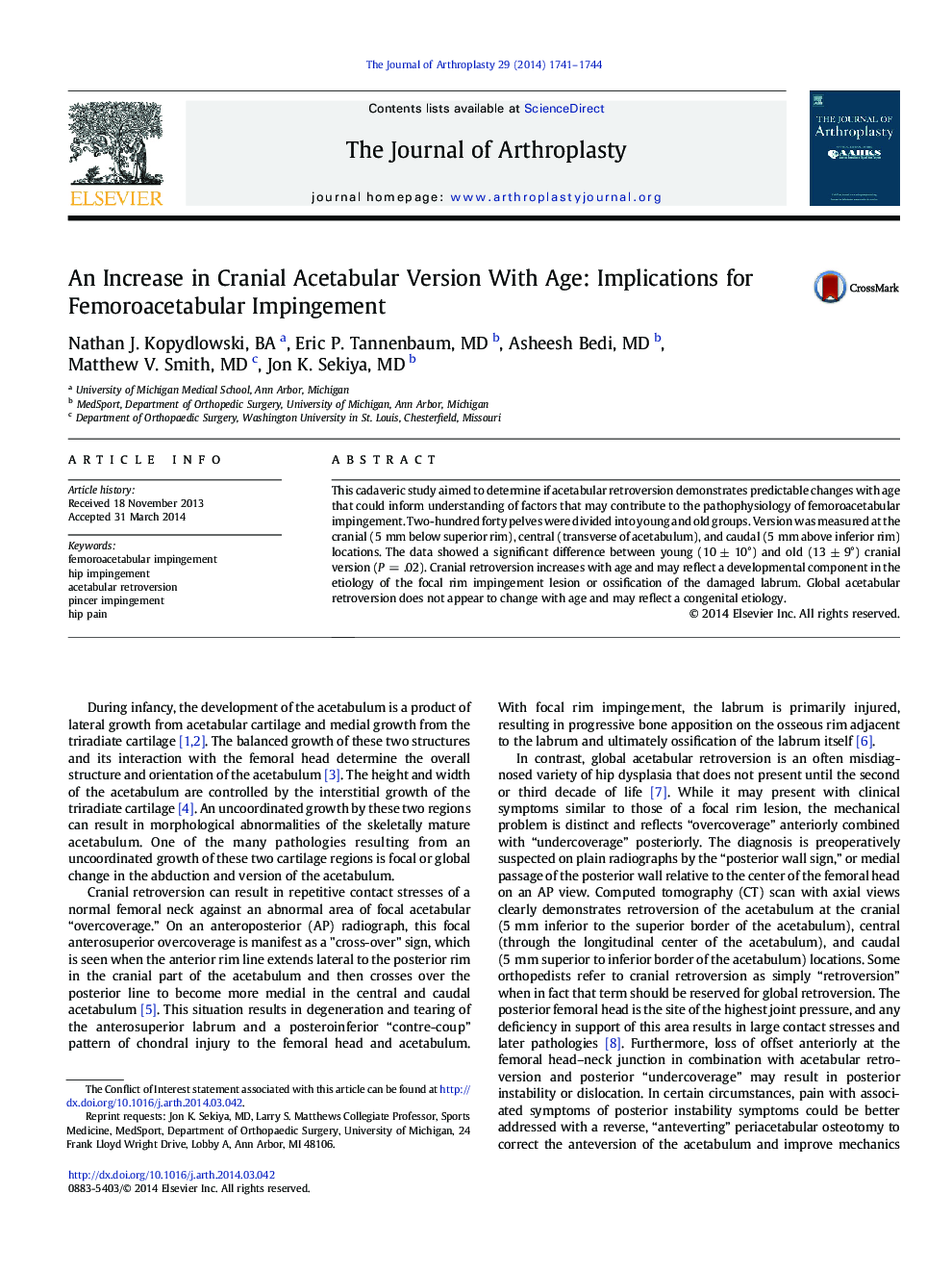| Article ID | Journal | Published Year | Pages | File Type |
|---|---|---|---|---|
| 4060529 | The Journal of Arthroplasty | 2014 | 4 Pages |
This cadaveric study aimed to determine if acetabular retroversion demonstrates predictable changes with age that could inform understanding of factors that may contribute to the pathophysiology of femoroacetabular impingement. Two-hundred forty pelves were divided into young and old groups. Version was measured at the cranial (5 mm below superior rim), central (transverse of acetabulum), and caudal (5 mm above inferior rim) locations. The data showed a significant difference between young (10 ± 10°) and old (13 ± 9°) cranial version (P = .02). Cranial retroversion increases with age and may reflect a developmental component in the etiology of the focal rim impingement lesion or ossification of the damaged labrum. Global acetabular retroversion does not appear to change with age and may reflect a congenital etiology.
